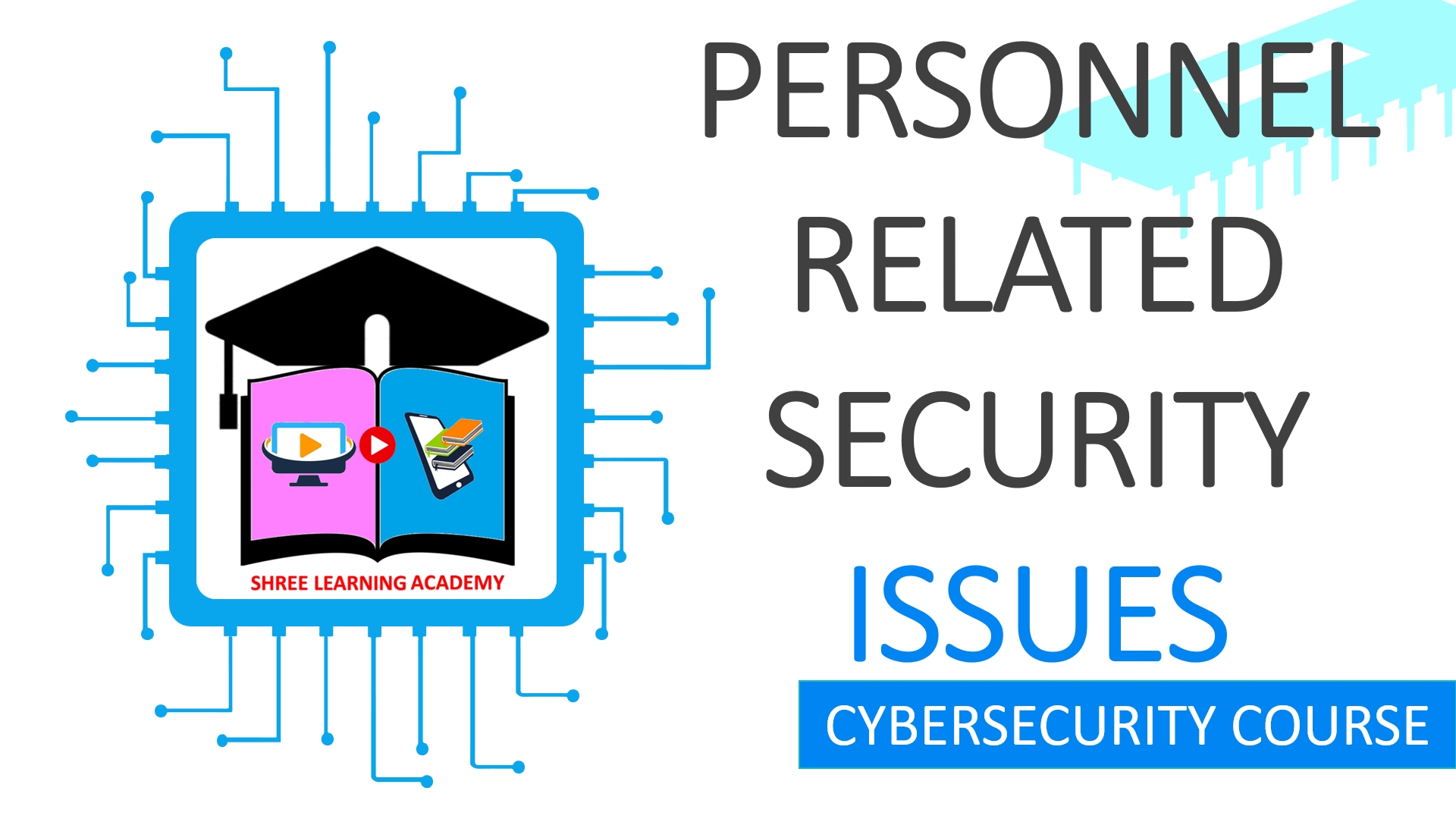SHREE LEARNING ACADEMY
Personnel Related Security Issues: The Biggest Threat to Your Data (Not Machines!)
Introduction
In our increasingly digital age, the security of an organization's data and systems is paramount. Nevertheless, human error, deception, or intentional wrongdoing often constitutes the weakest link in security infrastructure. Understanding how to manage and resolve personnel-related security issues is thus crucial. This chapter explores the different types of personnel-related security issues, from policy violation and insider threats to social engineering and potential vulnerabilities arising from social media and personal email use.
Human Element: The Weakest Link
The human element remains one of the most vulnerable components in an organization's security framework. A simple error or oversight, a lack of awareness, or an act of deception can potentially compromise the organization's security.
For example, a hospital employee may accidentally send confidential patient data to an unauthorized recipient, a clear breach of the Health Insurance Portability and Accountability Act (HIPAA). Such mistakes may arise due to a lack of proper awareness training or a simple human error. Consequently, implementing effective security strategies to address these issues is crucial. This might include creating comprehensive security training programs and evaluating activity logs regularly to detect and address violations promptly.
Policy Violation: An Unintended or Deliberate Breach
Security policies serve as a backbone for an organization's security posture. These policies outline the responsibilities and rules that every employee must adhere to. However, accidental or intentional policy violations can compromise the organization's security.
Imagine a scenario where an employee of a finance firm unintentionally installs a software program that goes against the company's security policy. This innocent act could provide an entry point for cybercriminals, risking a significant security breach. To prevent such violations, organizations must ensure that every user understands their responsibilities under these policies. Violations should trigger an internal investigation to assess the intent and extent of the breach. Depending on the findings, the responses may range from retraining or reassigning the individual to outright termination in the case of deliberate violations.
Insider Threat
The insider threat is one of the most challenging personnel-related security issues. Insiders, who already have access to sensitive data and systems, can intentionally violate security policies, causing substantial damage.
For instance, an angry employee with access to customer credit card data might choose to sell this information on the dark web. In such cases, the organization needs to act swiftly to remove the threat and resecure compromised resources. This might involve changing passwords, revoking access, or implementing additional security measures. If necessary, the organization should not hesitate to involve law enforcement agencies to ensure the offender faces the appropriate consequences.
Social Engineering
Social engineering involves manipulating individuals into divulging confidential information or taking actions that compromise security. Despite its simplicity, it's a highly effective method employed by cybercriminals.
A classic example of a social engineering attack is a phishing email where an attacker masquerades as a bank, requesting the recipient to verify their account details. The unwary recipient, thinking it's a legitimate request, divulges their sensitive information, playing into the attacker's hands. To counter this, companies must provide regular training to their personnel on identifying and avoiding such attacks. Additionally, robust investigative and response mechanisms should be in place to address any data leakage or remote access issues that might arise.
Social Media
In our interconnected world, social media has become an integral part of daily life. However, it can serve as both a distraction and a potential vulnerability for organizations.
Consider a scenario where an employee publicly shares their work frustration on a social media platform. A cunning attacker could use this information to impersonate a senior official offering help, tricking the employee into revealing sensitive data. As a preventive measure, organizations should have a stringent acceptable user policy (AUP) that discourages non-work related use of company resources. Responses to violations can include restricting access to social media sites, reprimanding the offenders, or in severe cases, termination.
Personal Email
Personal email usage at work poses a unique set of security challenges. It can be a source of distraction, a potential route for data leakage, or a gateway for malware infections.
For example, an employee might receive a seemingly harmless email containing a link to a "greeting card" from a friend. But in reality, this link could lead to a malware-infected website. Organizations should consider restricting access to personal emails on company equipment to mitigate such risks.
Conclusion
The resolution of personnel-related security issues is an ongoing process. It requires a comprehensive strategy that includes robust policies, ongoing awareness training, and prompt response mechanisms. Only through a combination of technology, policy, and people can an organization hope to maintain a secure environment in an increasingly complex and challenging digital landscape.
Test Yourself
Take Free Quiz
Watch our Video Tutorial

